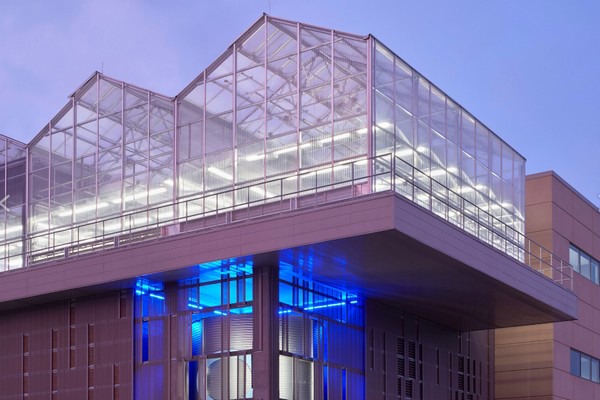The Texas A&M University System Board of Regents has approved a $7.4 million plan to construct an advanced greenhouse facility at the Texas A&M AgriLife Research and Extension Center at Dallas.
The 7,700-square-foot facility will boast technologies that can lead the rapidly emerging field of controlled environment agriculture, or CEA — the production of food in enclosed spaces using technologies that can precisely adjust the conditions within.
Controlled environment agriculture systems include greenhouses, hoop houses, hydroponics, aquaponics and other systems that employ tools for controlling light, temperature and a host of other climate conditions.
The center is one of 13 regional Texas A&M AgriLife Research and Extension Centers operated by Texas A&M AgriLife Research.

"The new greenhouse facility will serve as a critical research tool that we hope will support the most impactful controlled environment agriculture program in the southern U.S., especially for hot climates," said G. Cliff Lamb, director of AgriLife Research. "It is a powerful resource in our agency's mission to advance leading-edge discoveries and innovation, sustainable production systems, economic strength and healthy living."
An urban opportunity for CEA impacts
Researchers at Dallas, the sole urban center among the 13, hope the new greenhouse facility will enable solutions for sustainable production of nutritious foods within urban food deserts. They said the facility can also become a working example for urban populations that reconnects them to food by demonstrating its production.
"It also demonstrates our renewed commitment to Texas as a land-grant institution," said Daniel Leskovar, Ph.D., center director and controlled environment horticulture lead at Dallas and the Texas A&M AgriLife Research and Extension Center at Uvalde. "This area of research can help us strengthen and explore beyond the traditional production methods of our state's top horticultural commodities, eventually contributing to a research portfolio that leads the world in controlled environment agriculture."
Employing advanced CEA technologies
The square footage of the greenhouse facility at Dallas will be separated into four modern, equally sized greenhouses and a headhouse.
Each greenhouse will include built-in precision lighting, irrigation, data processing capabilities and independent climate controls. Advanced-sensing technologies will inform and help researchers adjust environmental conditions like temperature, humidity and carbon dioxide. Multispectral camera systems in the facility will open new capabilities to capture and document plant responses to changes in climate.
Through innovative research and science-based solutions, the facility will promote sustainable urban agriculture, crop-water-energy management optimization and healthy living.
What's next
Texas A&M AgriLife leaders will now move to identify an architect and greenhouse contractors for the new facility, expected for completion within a year of breaking ground.
In the future, researchers hope to expand the facility into a larger complex that increasingly advances the science of controlled environment agriculture in the southern U.S. and beyond.
Source: agrilifetoday.tamu.edu
